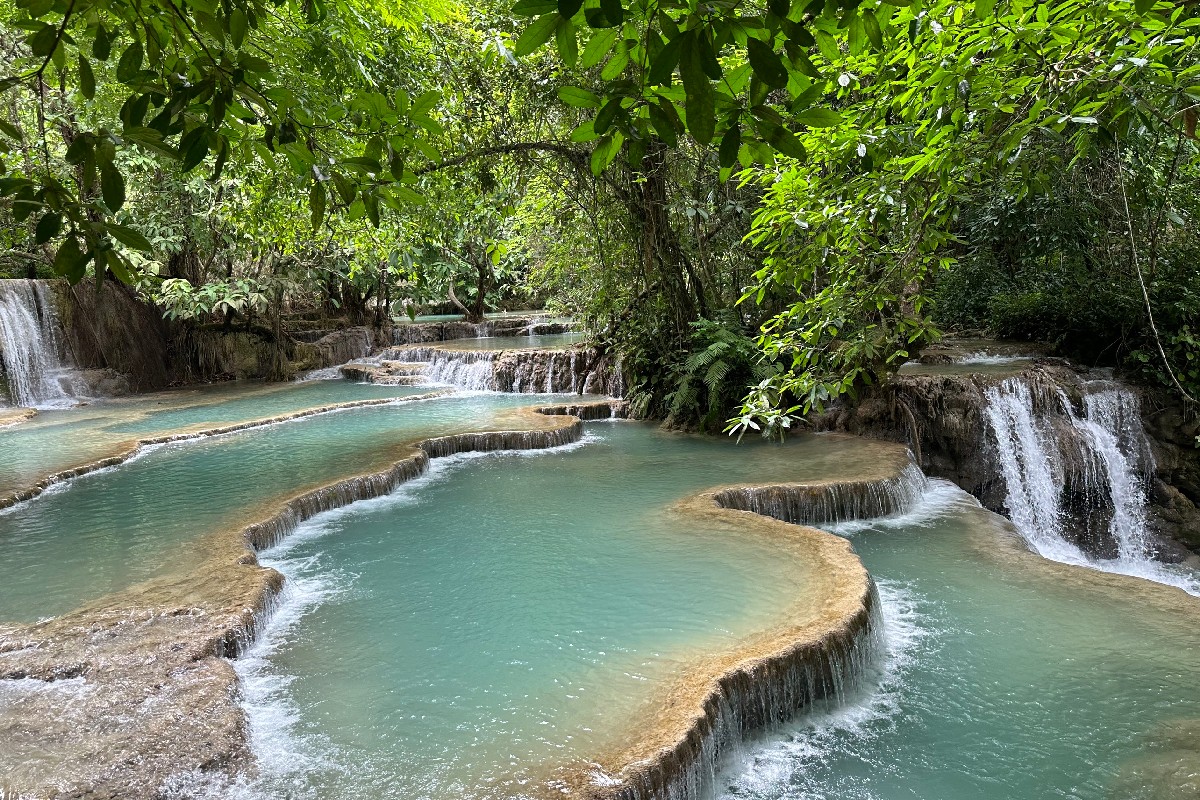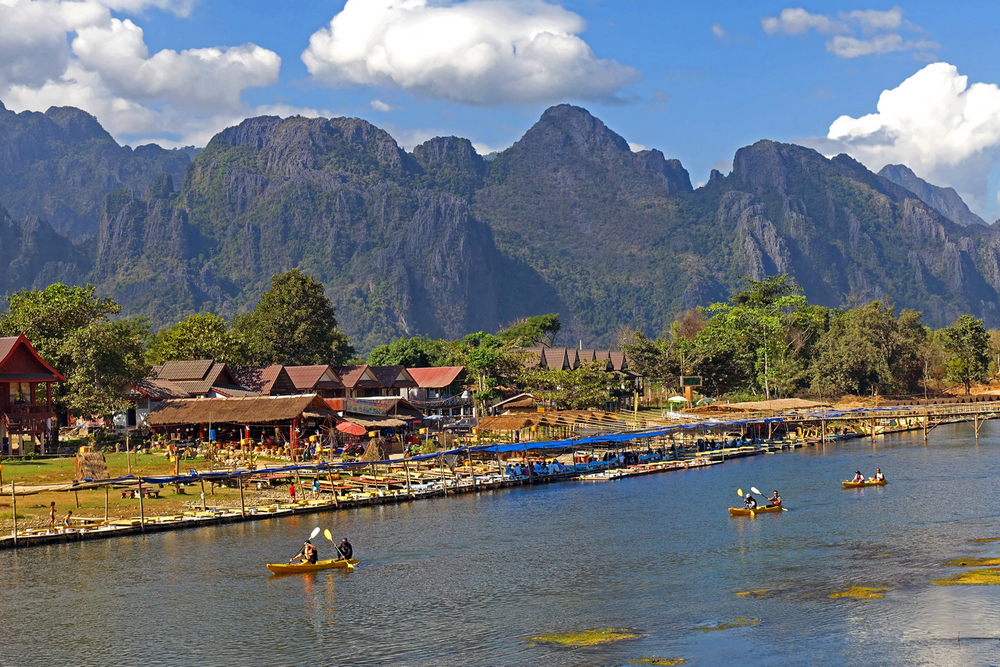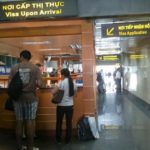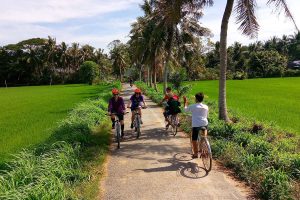Laos, a hidden gem in Southeast Asia, offers travelers a unique blend of stunning natural landscapes, rich cultural heritage, and warm hospitality. With its lush mountains, serene rivers, and ancient temples, this landlocked country is perfect for those seeking adventure and tranquility alike. If you’re planning a trip to Laos, a well-structured itinerary can help you make the most of your time there. In this blog post, we will guide you through an exciting 10-day journey across Laos, covering essential travel documents, visa requirements, budgeting tips, and a detailed day-by-day itinerary that includes must-see attractions and activities.
Essential Travel Documents and Visa Requirements
Before embarking on your adventure in Laos, it’s important to ensure that you have all the necessary travel documents and understand the visa requirements. This section will provide you with essential information to prepare for your trip.
Passport Validity
Your passport should be valid for at least six months beyond your planned departure date from Laos. It’s advisable to carry a photocopy of your passport along with the original, as this can be helpful in case of loss or theft.
Visa Options
Most travelers will need a visa to enter Laos, but the good news is that many nationalities can obtain a visa on arrival. The visa on arrival is typically valid for 30 days and can be extended once for an additional 30 days. However, it’s always best to check the latest visa regulations based on your nationality before traveling.
- Visa on Arrival: To obtain a visa on arrival, you will need to present a completed visa application form, a passport-sized photo, and the visa fee (usually around $30-$42 depending on your nationality). You can get your visa at major international airports and border crossings in Laos.
- E-Visa: Alternatively, some travelers may opt for an e-visa, which can be applied for online prior to your trip. The e-visa process is straightforward and allows you to skip the lines upon arrival.
Health and Vaccinations
While not mandatory, it’s recommended to consult with your healthcare provider regarding vaccinations before traveling to Laos. Common vaccinations include Hepatitis A, Typhoid, and Tetanus. Additionally, consider taking precautions against mosquito-borne diseases like dengue fever and malaria.
Travel Insurance
Travel insurance is highly recommended for any trip abroad. Ensure that your policy covers medical emergencies, trip cancellations, lost luggage, and other unforeseen circumstances. This will give you peace of mind during your travels.
Best Time to Visit Laos
Choosing the right time to visit Laos can significantly enhance your experience. The climate varies throughout the year, and understanding the seasonal changes will help you plan your trip accordingly.
Dry Season
The dry season, which runs from November to April, is considered the best time to visit Laos. During these months, temperatures are cooler, and rainfall is minimal, making it ideal for outdoor activities and sightseeing. The weather is particularly pleasant in December and January, with daytime temperatures averaging around 25°C (77°F).
Wet Season
The wet season lasts from May to October, with the heaviest rainfall occurring between July and August. While this period may deter some travelers, it also brings vibrant greenery and fewer tourists. If you don’t mind occasional rain showers, you can enjoy a more tranquil experience and witness the beauty of nature in full bloom.
Festivals and Events
If you want to immerse yourself in local culture, consider timing your visit to coincide with traditional festivals. The Lao New Year (Pi Mai) in mid-April is one of the most significant celebrations, featuring water fights, parades, and cultural performances. Another notable event is the That Luang Festival in November, which celebrates the sacred stupa in Vientiane.
Currency and Budgeting Tips
Understanding the currency and budgeting for your trip to Laos is crucial for a smooth travel experience. Here’s what you need to know about the local currency and how to manage your expenses.
Currency
The official currency of Laos is the Lao Kip (LAK). Although US dollars and Thai baht are widely accepted in tourist areas, it’s advisable to use the local currency for transactions to avoid unfavorable exchange rates. ATMs are available in major cities, and credit cards are accepted at larger hotels and restaurants, but cash is king in rural areas.
Budgeting Tips
Laos is known for being a budget-friendly destination. Here are some tips to help you manage your expenses:
- Accommodation: Accommodation options range from budget hostels to luxury hotels. For budget travelers, guesthouses and hostels offer affordable rates, starting from as low as $5 per night. Mid-range hotels typically cost between $20 to $50, while luxury accommodations can exceed $100 per night.
- Food and Dining: Street food is a staple in Laos and provides a delicious way to experience local cuisine without breaking the bank. Meals at street vendors can cost as little as $1 to $3, while dining at restaurants may range from $5 to $15 per person. Don’t miss out on trying traditional dishes like Laap, Papaya Salad, and Sticky Rice.
- Transportation: Local transportation options include tuk-tuks, buses, and motorbike rentals. Tuk-tuks are convenient for short distances, while buses are a cost-effective way to travel between cities. Renting a motorbike can cost around $5 to $10 per day, giving you the freedom to explore at your own pace.
Day-by-Day Itinerary for 10 Days in Laos
Now that you’re equipped with essential travel information, let’s dive into a detailed day-by-day itinerary for your 10 days in Laos. This itinerary will take you through the highlights of Vientiane, Luang Prabang, and Vang Vieng, ensuring you experience the best of what this beautiful country has to offer.
Day 1: Arrival in Vientiane
Upon arriving in Vientiane, the capital city of Laos, you’ll be greeted by a laid-back atmosphere and friendly locals. Take some time to settle into your accommodation and acclimate to your new surroundings.
- Exploring Your Neighborhood: After checking in, venture out to explore your neighborhood. Stroll along the Mekong River, where you can enjoy the scenic views and watch the sunset. The riverside promenade is lined with cafes and restaurants, making it a great spot to relax after your journey.
- Dinner at a Local Restaurant: For dinner, head to a local restaurant to sample authentic Lao cuisine. Try dishes like Khao Niew (sticky rice), Mok Pa (steamed fish in banana leaves), and Tam Mak Hoong (papaya salad). Don’t forget to pair your meal with a refreshing Beer Lao, a popular local beer.
Day 2: Exploring Vientiane’s Heritage Sites

Vientiane is home to several historical and cultural landmarks that reflect the country’s rich heritage. Spend your second day visiting some of the city’s most iconic sites.
- Wat Si Saket: Start your day with a visit to Wat Si Saket, the oldest temple in Vientiane, dating back to 1818. This stunning structure features thousands of Buddha statues and intricate murals that depict Buddhist teachings. Take your time to admire the architecture and soak in the serene atmosphere.
- Patuxai Arch: Next, head to Patuxai, a monumental archway resembling Paris’s Arc de Triomphe. Climb to the top for panoramic views of the city and the surrounding landscape. The park adjacent to the arch is a lovely place to relax and enjoy a picnic.
- Evening at Mekong Riverside: As the sun sets, return to the Mekong Riverside for an evening stroll. The area comes alive with street food vendors, live music, and local artisans selling their crafts. Enjoy the vibrant atmosphere and try some delicious snacks as you mingle with locals and fellow travelers.
Day 3: Journey to Luang Prabang
On your third day, embark on a journey to Luang Prabang, a UNESCO World Heritage Site known for its well-preserved architecture and stunning natural beauty.
- Travel Options to Luang Prabang: You can choose to travel to Luang Prabang by bus or plane. The bus ride takes approximately 10-12 hours, offering scenic views of the countryside, while a flight takes about an hour. If you opt for the bus, consider booking a VIP bus for a more comfortable experience.
- First Impressions of Luang Prabang: Upon arrival in Luang Prabang, you’ll be captivated by its charm. The town is nestled between the Mekong and Nam Khan rivers, surrounded by lush mountains. Take a leisurely walk along the streets lined with colonial-era buildings, vibrant markets, and quaint cafes.
Day 4: Discovering Luang Prabang

Luang Prabang is a treasure trove of cultural and natural wonders. Spend your fourth day exploring the town’s UNESCO World Heritage Sites and indulging in outdoor adventures.
- UNESCO World Heritage Sites: Begin your day by visiting the Royal Palace Museum, which showcases artifacts from the Lao monarchy. Next, head to Wat Xieng Thong, one of the most important temples in Luang Prabang, known for its stunning mosaics and intricate architecture. Don’t forget to climb Mount Phousi for breathtaking views of the town and surrounding landscape.
- Kuang Si Waterfall Adventure: In the afternoon, take a trip to Kuang Si Waterfall, located about 30 kilometers from Luang Prabang. The turquoise waters cascading down the limestone cliffs create a picturesque setting for swimming and relaxation. Explore the surrounding trails, visit the bear rescue center, and enjoy a picnic amidst nature.
Day 5: Cultural Experiences in Luang Prabang
Immerse yourself in the local culture on your fifth day in Luang Prabang. Participate in traditional ceremonies and explore the vibrant markets.
- Morning Alms Giving Ceremony: Wake up early to witness the morning alms-giving ceremony, a revered tradition in which monks collect offerings from locals and visitors. This spiritual experience is a beautiful way to connect with the local culture and observe the peaceful rituals of Buddhism.
- Local Markets and Cuisine: After the ceremony, visit the morning market to sample fresh produce, spices, and local delicacies. Engage with friendly vendors and try traditional snacks like grilled meat skewers and sticky rice. In the evening, consider taking a cooking class to learn how to prepare authentic Lao dishes.
Day 6: Adventure in Vang Vieng

On day six, set off for Vang Vieng, a town renowned for its stunning karst landscapes and adventurous activities.
- Travel from Luang Prabang to Vang Vieng: The journey from Luang Prabang to Vang Vieng takes approximately 4-5 hours by bus. Enjoy the scenic drive through the mountains and valleys, and keep your camera ready for breathtaking views along the way.
- Activities: Caving and Tubing: Once you arrive in Vang Vieng, gear up for adventure! Explore the nearby caves, such as Tham Jang Cave, which offers stunning rock formations and historical significance. Alternatively, you can go tubing on the Nam Song River, a popular activity that allows you to float leisurely while enjoying the picturesque scenery.
Day 7: Engaging with Nature in Vang Vieng
Continue your exploration of Vang Vieng by engaging with nature and experiencing the thrill of outdoor activities.
- Hot Air Balloon Rides: Start your day with a hot air balloon ride over Vang Vieng’s stunning landscape. As you ascend, you’ll be treated to panoramic views of the lush green fields, limestone cliffs, and winding rivers below. This unforgettable experience is perfect for photography enthusiasts and nature lovers alike.
- Scenic Hiking Trails: In the afternoon, embark on a hike to explore the surrounding countryside. There are several trails that cater to different skill levels, allowing you to discover hidden lagoons, caves, and viewpoints. Be sure to bring plenty of water and wear appropriate footwear for your hike.
Day 8: Back to Vientiane
After an exhilarating stay in Vang Vieng, return to Vientiane for a day of relaxation and leisure activities.
- Relaxation and Leisure Activities:Take this opportunity to unwind and recharge. Consider visiting a local spa for a traditional Lao massage or spend some time lounging by your hotel pool. Alternatively, you can explore the city at a leisurely pace, revisiting your favorite spots or discovering new ones.
- Last-Minute Shopping in Vientiane: In the afternoon, indulge in some last-minute shopping at the local markets. Browse through handicrafts, textiles, and souvenirs to bring home a piece of Laos with you. Don’t forget to haggle for the best prices!
Day 9: Day Trips from Vientiane
On your penultimate day, take advantage of your time in Vientiane by embarking on a day trip to nearby attractions.
- Buddha Park Excursion: Visit the famous Buddha Park (Xieng Khuan), located about 25 kilometers from Vientiane. This quirky park features over 200 sculptures depicting various Buddhist and Hindu deities. Wander through the park and take photos of the unique art installations.
- Exploring the Nam Ngum Lake: In the afternoon, head to Nam Ngum Lake, a picturesque reservoir surrounded by mountains and forests. You can rent a boat to explore the lake or simply relax by the shore. Enjoy a picnic lunch while soaking in the serene atmosphere.
Day 10: Departure Preparation
As your 10-day journey in Laos comes to an end, take some time to reflect on your experiences and prepare for departure.
- Reflection on Your 10-Day Journey: Spend your final morning reflecting on the memories you’ve created during your trip. Consider journaling about your favorite moments, the people you met, and the lessons you learned along the way.
- Final Thoughts and Recommendations: Before heading to the airport, make sure to double-check your travel documents and pack your belongings. If time permits, grab a final meal at a local restaurant or café to savor the flavors of Laos one last time.
Notes
Health and Safety Considerations
When traveling in Laos, it’s essential to prioritize your health and safety. Drink bottled or boiled water to avoid waterborne illnesses, and be cautious when consuming street food. Additionally, ensure that you have adequate travel insurance to cover any unexpected medical expenses.
Packing Essentials for Laos
Pack light and breathable clothing suitable for the tropical climate. Comfortable walking shoes are a must for exploring cities and hiking trails. Don’t forget essentials like sunscreen, insect repellent, a reusable water bottle, and a power adapter for your electronic devices.
Mistakes to Avoid
Common Pitfalls for First-Time Travelers
First-time travelers to Laos may encounter some common pitfalls. One mistake is underestimating travel times between destinations, as roads can be winding and slow. Additionally, be mindful of cultural sensitivities, such as dressing modestly when visiting temples and respecting local customs.
Cultural Sensitivities to Keep in Mind
Laos is a predominantly Buddhist country, and it’s essential to show respect for local customs and traditions. When visiting temples, remove your shoes and refrain from pointing your feet at sacred objects. Always ask permission before taking photos of people, especially monks and locals.
Frequently Asked Questions
What is the best time of year to visit Laos?
The best time to visit Laos is during the dry season, from November to April, when the weather is cooler and drier.
How can I travel between cities in Laos?
You can travel between cities in Laos by bus, minivan, or domestic flights. Buses are the most common mode of transport and offer a budget-friendly option.
What should I know about local customs and traditions?
Be respectful of local customs, such as removing your shoes before entering homes and temples. Additionally, it’s customary to greet locals with a “Sabaidee” (hello) and to use both hands when giving or receiving items.
Is it safe to travel in Laos?
Laos is generally considered a safe destination for travelers. However, it’s always wise to exercise caution, keep your belongings secure, and be aware of your surroundings.
Conclusion
A 10-day journey through Laos promises an unforgettable experience filled with breathtaking landscapes, rich cultural encounters, and warm hospitality. From the bustling streets of Vientiane to the serene beauty of Luang Prabang and the adventurous spirit of Vang Vieng, each destination offers something unique for every traveler. By following this comprehensive itinerary, you can make the most of your time in Laos and create lasting memories. Whether you’re seeking adventure, relaxation, or cultural immersion, Laos is sure to leave a mark on your heart. Happy travels!





